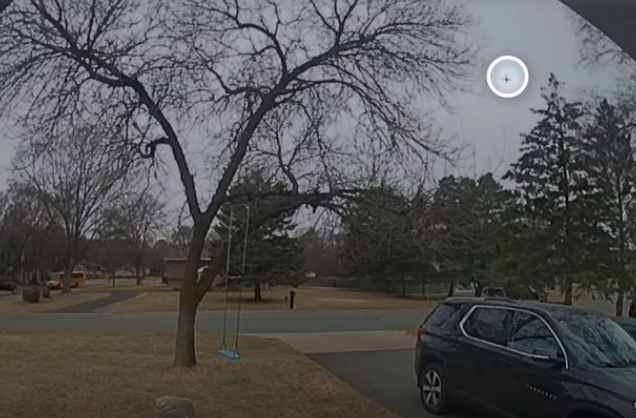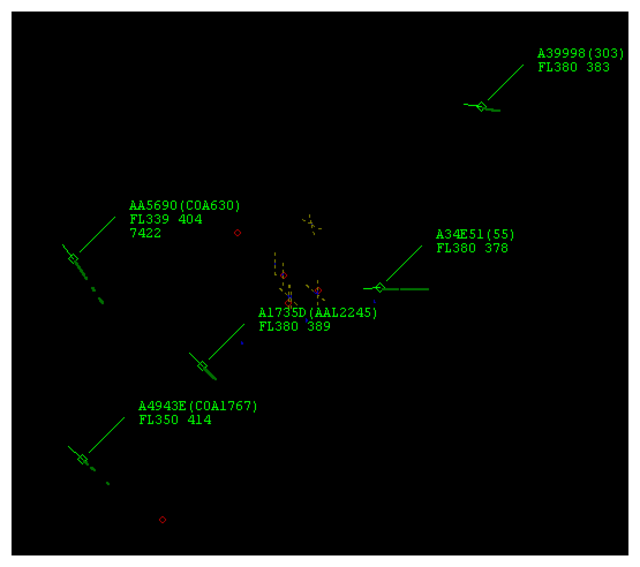Assessing Red Line Weather
Few weather phenomena are truly a red line that cannot be safely flown. Is the cold front one?
A front is the border where one distinct air mass meets another. More correctly it's a frontal area, since the contact surface stretches from the ground into the upper limit of the troposphere. The area that intersects the ground is where the front is drawn on a meteorological analysis map.
The front is defined based on which way the air is moving. If warm air displaces cold, it's a warm front (depicted in red). If the opposite is true, then it's a cold front (blue). Should there be no real movement either way, it's a stationary front. And sometimes nature will rear-end a warm front with some cold air, causing an occluded front.
Are Cold Fronts Impenetrable?
There are several reasons why the cold front can be a problem for pilots. As the cold air encounters the warm sector, being colder and thus heavier, it acts in a wedge like manner and physically forces the air in front of it upwards. The frontal area (in stark contrast to that of the warm front) is relatively narrow and quite vertical. The warmer air being more buoyant and moist is forced up over the colder air.
The front exists in a trough—an extension of a low-pressure area. This is evidenced by rapidly falling barometric pressure as it approaches. The low pressure itself lends to instability and, since the isobars are tightly stacked, high winds can be expected. As the front passes (and the "kick" in the isobars) the wind quickly changes in a clockwise direction—causing strong and gusty winds on the ground—often hampering takeoff and landings.
Low pressure promotes instability, the influx of cold air pushes the warm, wet air upwards. As it cools in the ascent, cumulus/cumulonimbus clouds form, precipitation starts, releasing the latent heat (that was stored when making the water evaporate), further causing rapidly expanding and climbing storm clouds.
Everything isn't created equal and the cold front is an example of that. Depending on the actual physical values of the parameters involved, the strength of the front varies. A weak one may simply be observable as innocuous cumulus clouds forming and pose no problem for the pilot.
Complex Atmospheric Physics
A pop culture fad from a couple of decades past called "chaos theory" included a presupposition that the quiet flutter of a butterfly could (six months later) cause a storm on another continent. While there is some doubt about the example, the conclusion to draw was that although the basic physics is simple and straightforward, nature's application of it is anything but.
This applies perfectly to the cold front. We know from experience that it is by no means a homogeneous "wall." Instead it is a violent, dynamic, roiling mass of convective activity with parts rapidly ascending and others collapsing, areas with heavy to extreme precipitation and associated lightning and the turbulence that goes with all this.
Determining Precip Location
On the same line of thought, meteorological forecasts based on the available data of an area's atmosphere can make an accurate prediction on the probability of thunderstorms—but they cannot say with any precision where and when these will occur.
The lesson for us as pilots is that to make accurate decisions on how to deal with a cold front we need updated information. Remember that a building thunderstorm can rise at a rate of several thousand feet per minute. What looked like an opening in the weather may, in just a few flying miles, be completely closed to you.
I recently visited a successful flight school in my area and was stunned to see every student carrying a tablet—the central focus of the electronic flight bag. I'm not sure why my surprise since my airline chucked paper charts and manuals years ago. There is of course a plethora of apps and useful websites catering to every aviation need.
How Good Is Airborne WX
The weather radar information is especially impressive with motion and vivid colors, areas of turbulence and various other information available as desired.
However, regardless if those radar composites are viewed on your smartphone, tablet or a panel mounted device in your airplane, they have two severe limitations:
First, these are color coded images of returns from a radar antenna on the ground, looking up. This may correlate well with what you experience while flying at say 10,000 feet— or they may not. If the radar beam hits strong rainfall at low altitude it will show a strong return, probably depicted in yellow or red on your device. At cruising altitude, you may be well above it with no issues at all.
Second, the display you're observing suffers from varying degrees of latency. Depending on the type of service and method of upload they may be from ten to thirty minutes old. This is good enough for an overview of the situation but not for picking your way through weather.
Radar data from sources such as NEXRAD or SiriusXM must be considered as a strategic tool, for planning deviations at long distances of 50 to 100 miles. They cannot be reliably used for tactical avoidance for picking your way through convective activity within 20 miles.
Using Radar Returns
Ideally you have on-board radar. It updates to the second, it allows you to pan (scan vertically) to estimate the tops and where a penetration might be best. Modern equipment also has features available to the radar connoisseur that can be helpful. But few light GA planes have onboard radar, and these are of limited usefulness.
The reason is more physics than economics: the small radar dish that will fit on the typical light aircraft cannot provide the resolution required to pick out storms at greater distances. Some units in the hands of the discerning pilot of great experience have a place in their bag of tricks used to deal with cold fronts. However, it is by no means a panacea.
Fortunately, ATC can help—although subject to the same limitations as any ground-based radar, the returns are typically updated quickly on their screens. Also, they have PIREPS that can provide actual cloud height, gaps where others have snuck through and the level of turbulence experienced—good information to have. However, anytime there's extensive or extreme weather in the area ATC becomes busy with all the deviations required and the level of assistance can vary accordingly.
Summary
We must not forget the best weather avoidance tool available is our own vision. The problem here is that you are essentially blinded when in IMC or at night. Often, higher altitudes allow you to get on top of stratus layers, so you can see and avoid the cumulus build-ups. The good news is that cold fronts are usually fast moving and can often be waited out on the ground as they pass through—so flying to within 50 miles of the front and then landing will often allow you to continue the flight a few hours later.
With experience, you'll learn to "read" the weather ahead of you— temperature, turbulence and tops, as well as the change in winds aloft direct (some of this glass cockpit information is amazing). Cumuliform clouds have a distinct life cycle with differing shapes and appearances, precipitation has its own tale to tell. All this makes for an educated decision on how to proceed—or not to proceed.
Bo Henriksson is a captain with a regional carrier and has more than 15,000 flight hours.
This article originally appeared in the August 2018 issue ofIFR Refreshermagazine.
For more great content like this, subscribe toIFR Refresher!






